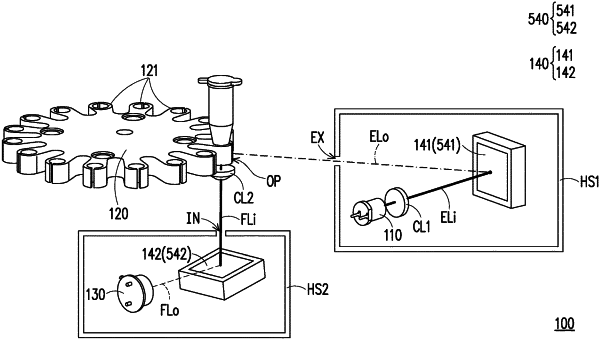| CPC G01N 21/6486 (2013.01) [B01L 7/52 (2013.01); B01L 2300/18 (2013.01); G01N 2201/0636 (2013.01)] | 6 Claims |

|
1. A detection device, comprising:
a light-emitting component;
a light-detecting component;
at least one reflective optical film element, disposed on a fluorescence channel between the light-emitting component and the light-detecting component; and
a control unit, coupled to the at least one reflective optical film element, and to control a wavelength band of a reflected light of the at least one reflective optical film element,
wherein the fluorescence channel comprises an excitation beam light path for passing of an excitation beam and a fluorescence beam light path for passing of a fluorescence beam that is generated in response to the excitation beam,
wherein each of the at least one reflective optical film element comprises one or more microelectromechanical systems (MEMS) reflective filter units, the MEMS reflective filter units each including an optical resonant cavity having a depth distance being controlled by the control unit to reflect light having a specific wavelength, and
an accommodating frame having a plurality of sleeve structures to accommodate a plurality of test specimens, the sleeve structures each having an opening to receive the excitation beam whose dominant wavelength falls within an excitation wavelength band and having a hole to transmit the fluorescence beam whose dominant wavelength falls within a detection wavelength band.
|